Abstract
A circadian oscillation (in the brain) of Drosophila spp. acts as a gating device restricting the emergence behavior of the adult to a limited fraction of each 24-hour cycle defined by that oscillator, but the oscillation does not gate intermediate steps of pupal development. Unlike the emergence act, such intermediate events in development occur at fixed times after prepupa formation and are totally independent of the phase of the ongoing oscillator that gates emergence behavior.
Full text
PDF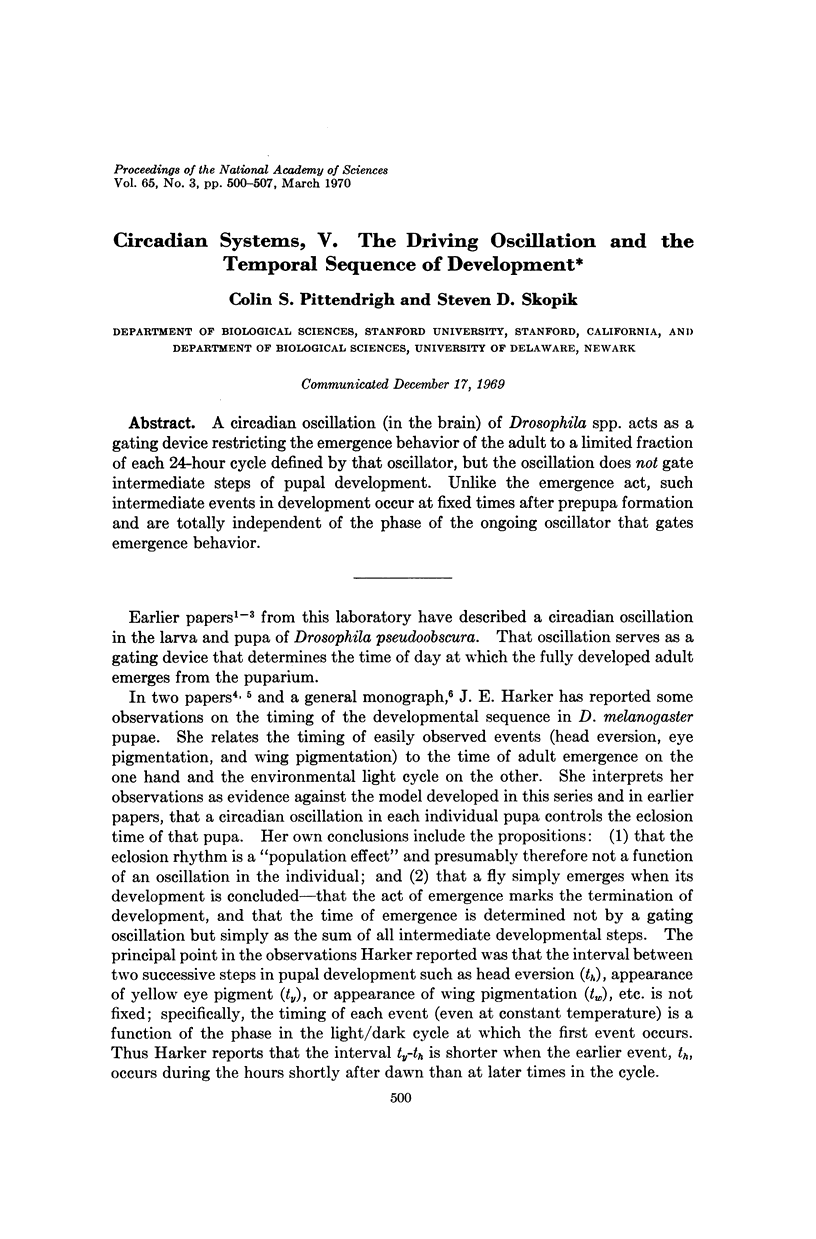
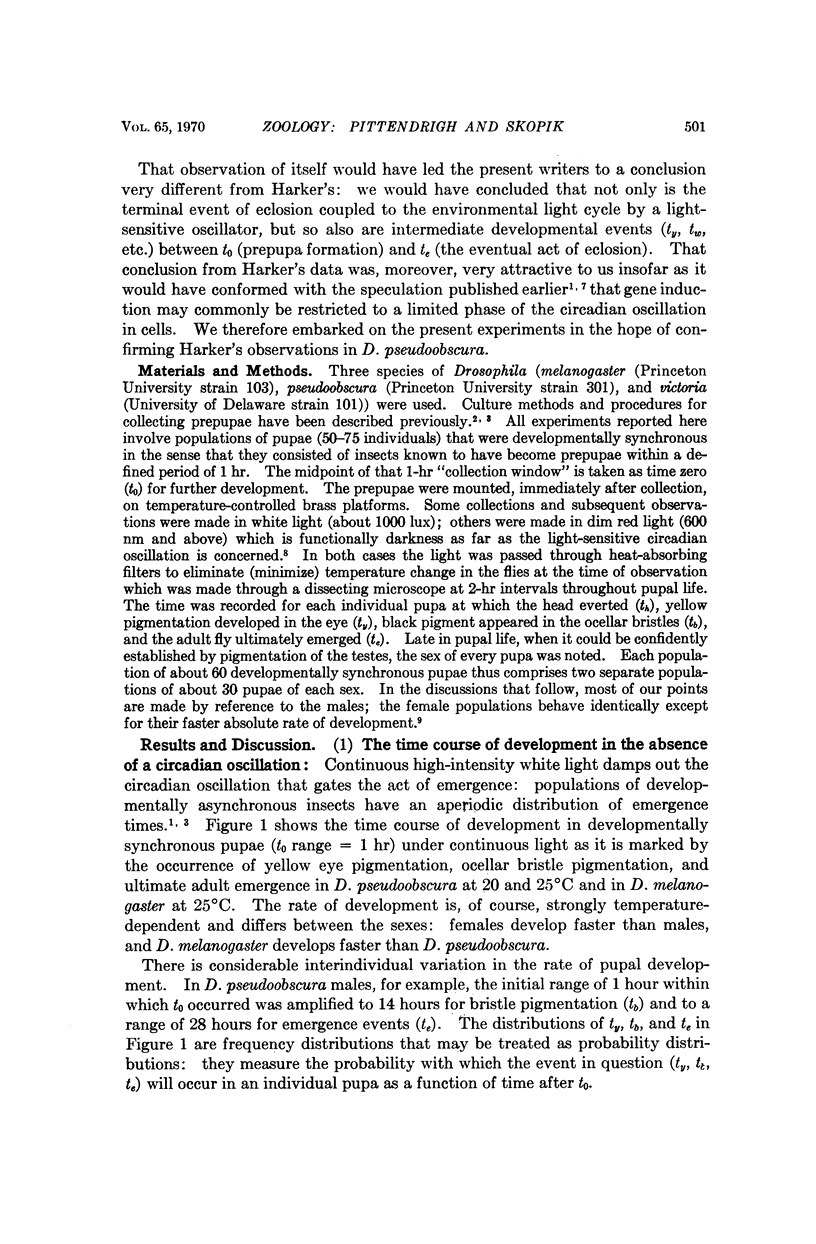
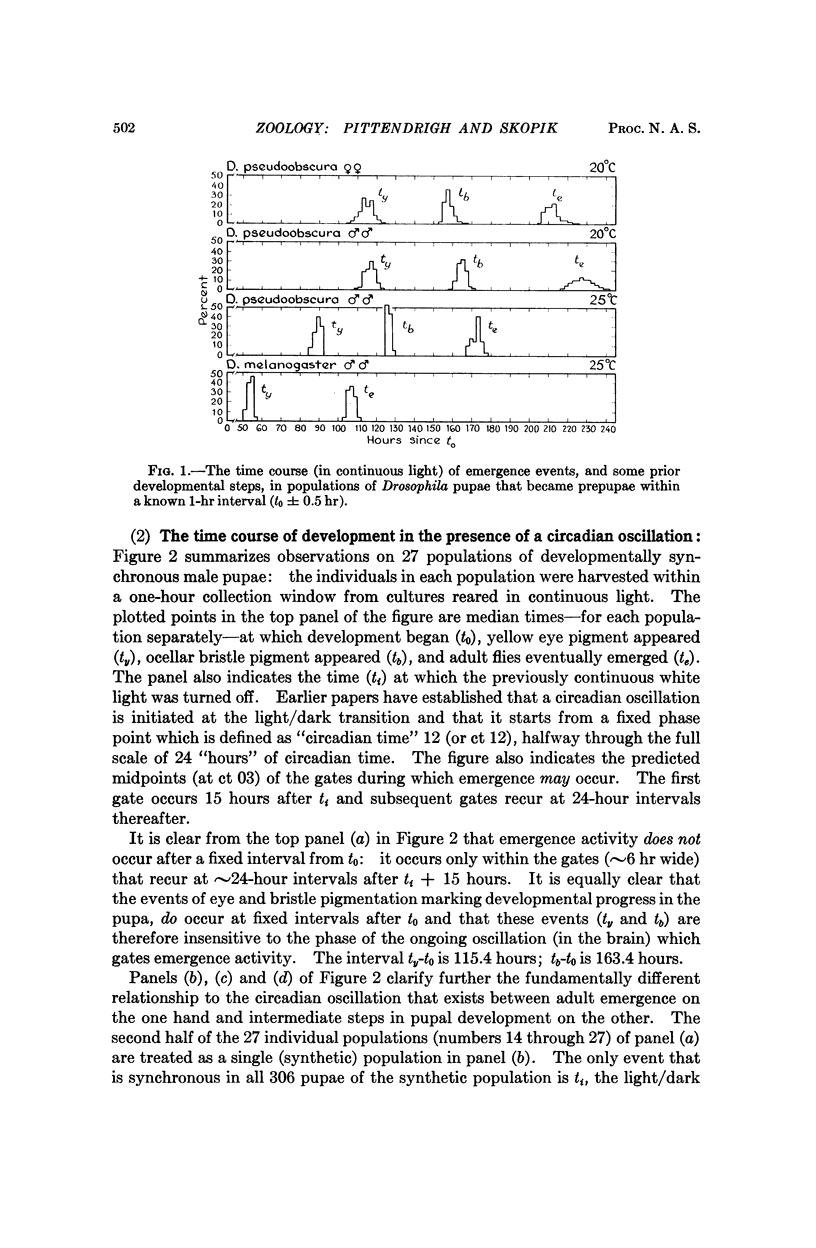
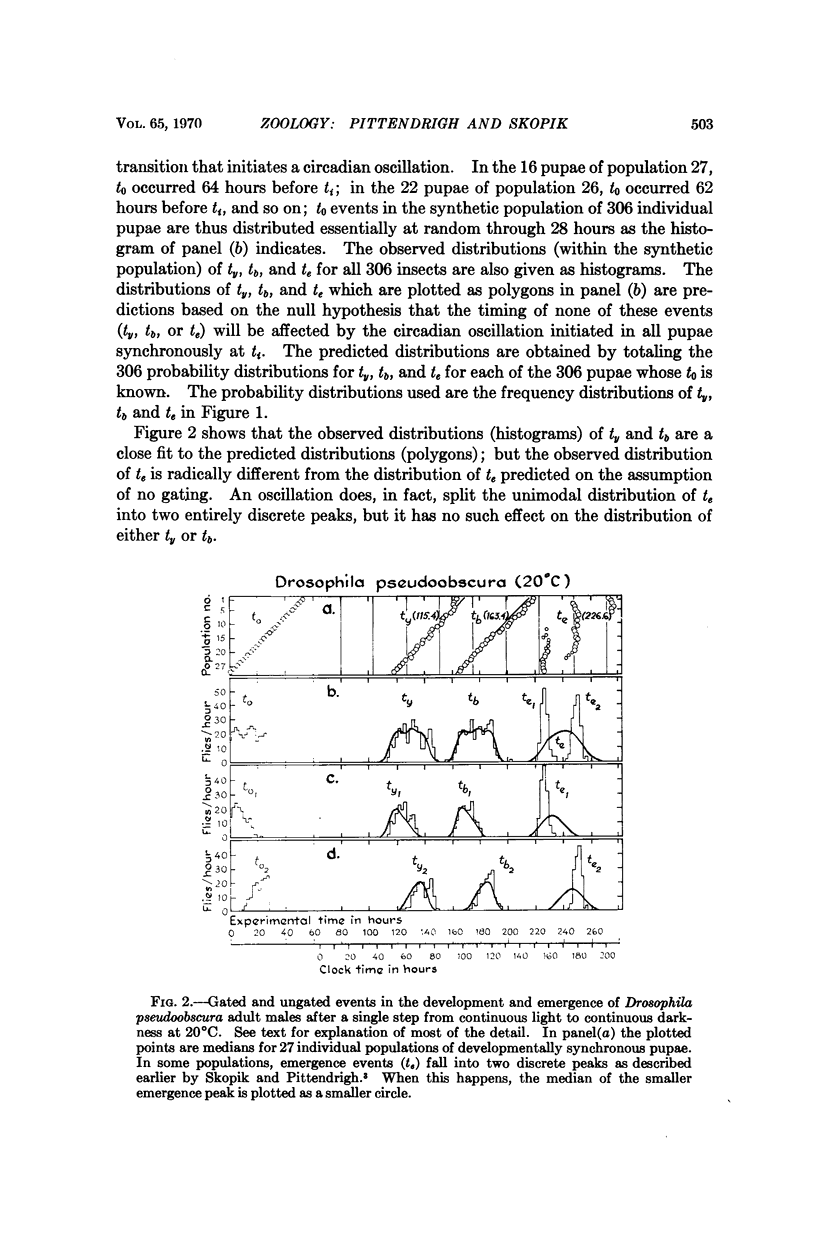
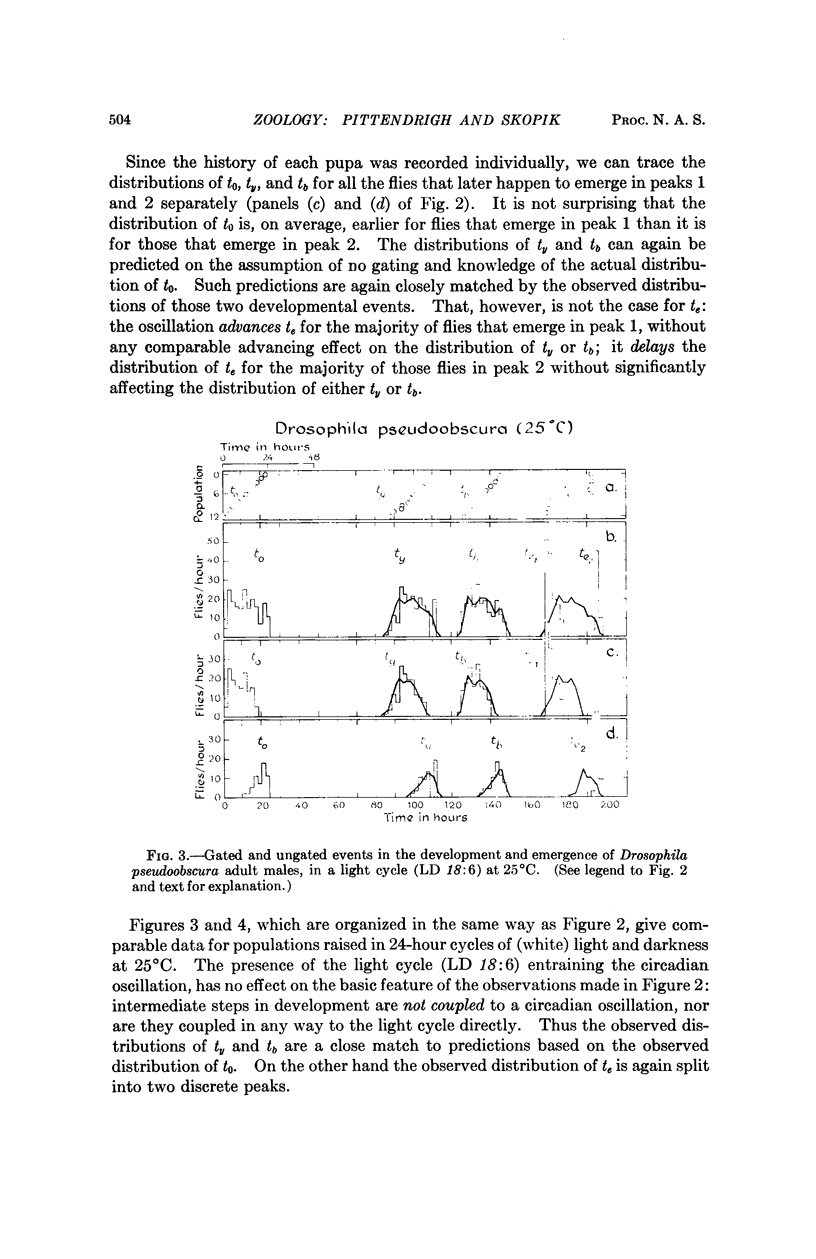
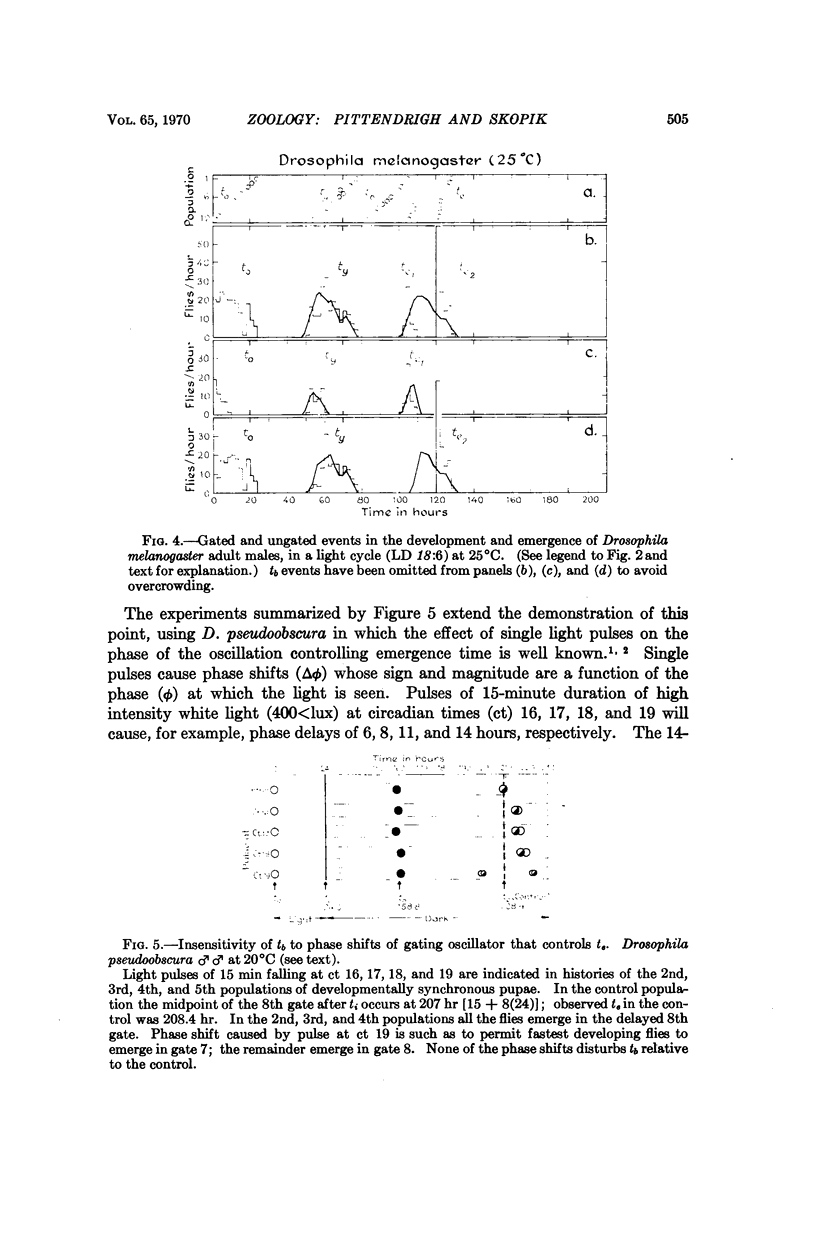
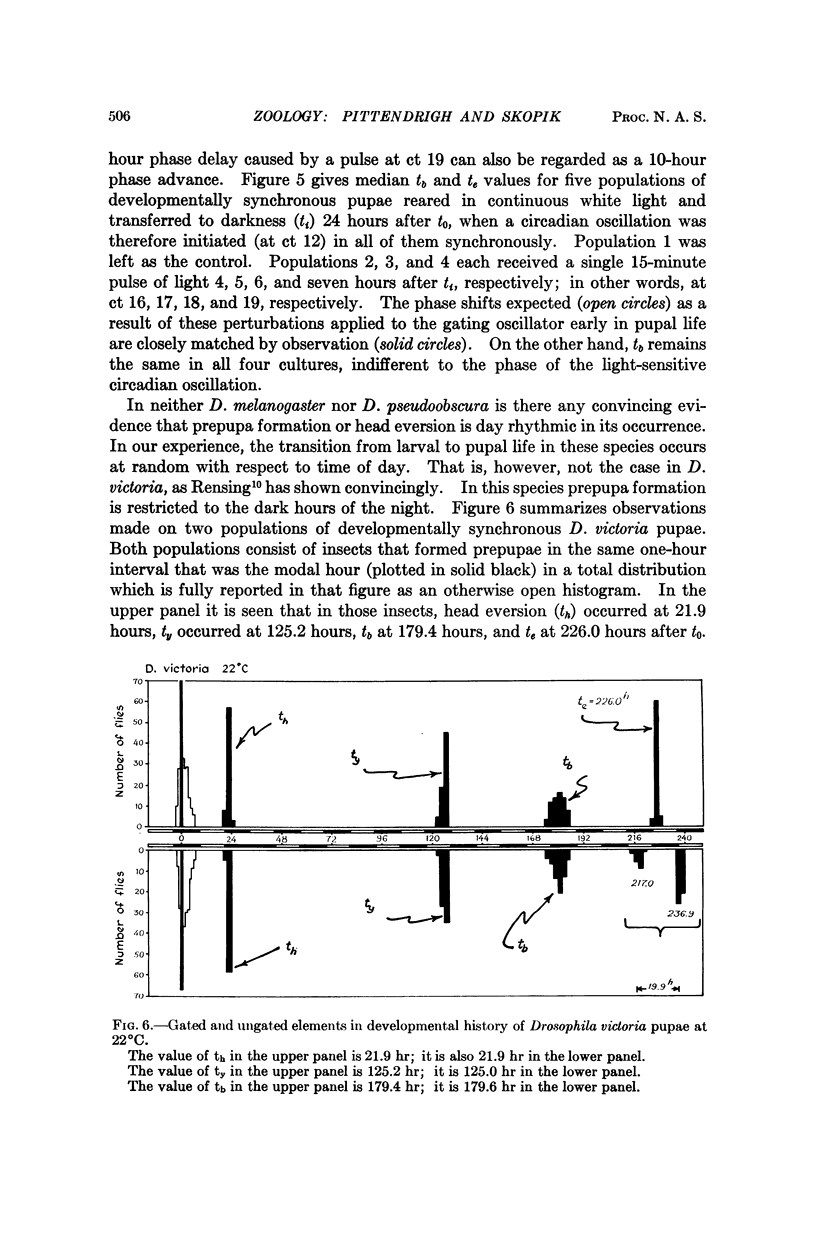
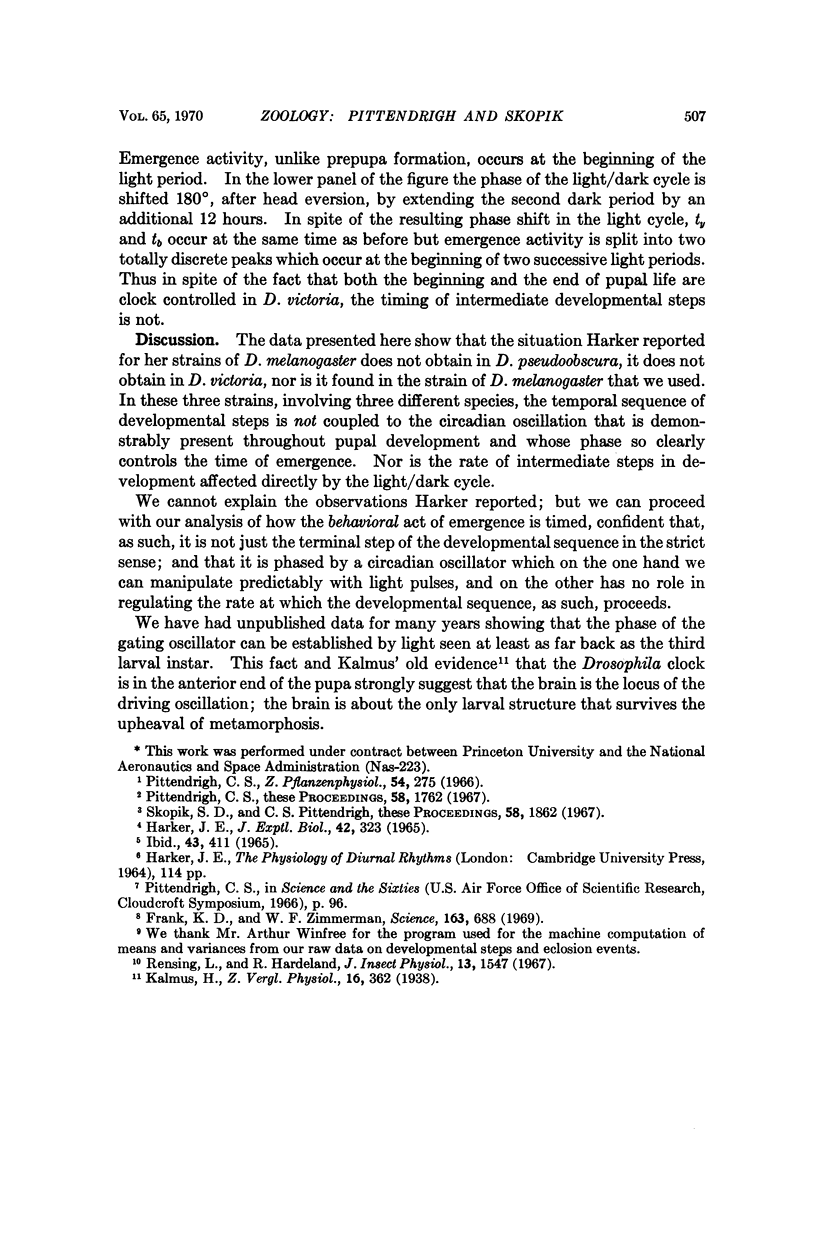
Images in this article
Selected References
These references are in PubMed. This may not be the complete list of references from this article.
- Frank K. D., Zimmerman W. F. Action spectra for phase shifts of a circadian rhythm in Drosophila. Science. 1969 Feb 14;163(3868):688–689. doi: 10.1126/science.163.3868.688. [DOI] [PubMed] [Google Scholar]
- HARKER J. E. THE EFFECT OF A BIOLOGICAL CLOCK ON THE DEVELOPMENTAL RATE OF DROSOPHILA PUPAE. J Exp Biol. 1965 Apr;42:323–337. doi: 10.1242/jeb.42.2.323. [DOI] [PubMed] [Google Scholar]
- Pittendrigh C. S. Circadian systems. I. The driving oscillation and its assay in Drosophila pseudoobscura. Proc Natl Acad Sci U S A. 1967 Oct;58(4):1762–1767. doi: 10.1073/pnas.58.4.1762. [DOI] [PMC free article] [PubMed] [Google Scholar]
- Skopik S. D., Pittendrigh C. S. Circadian systems, II. The oscillation in the individual Drosophila pupa; its independence of developmental stage. Proc Natl Acad Sci U S A. 1967 Nov;58(5):1862–1869. doi: 10.1073/pnas.58.5.1862. [DOI] [PMC free article] [PubMed] [Google Scholar]






